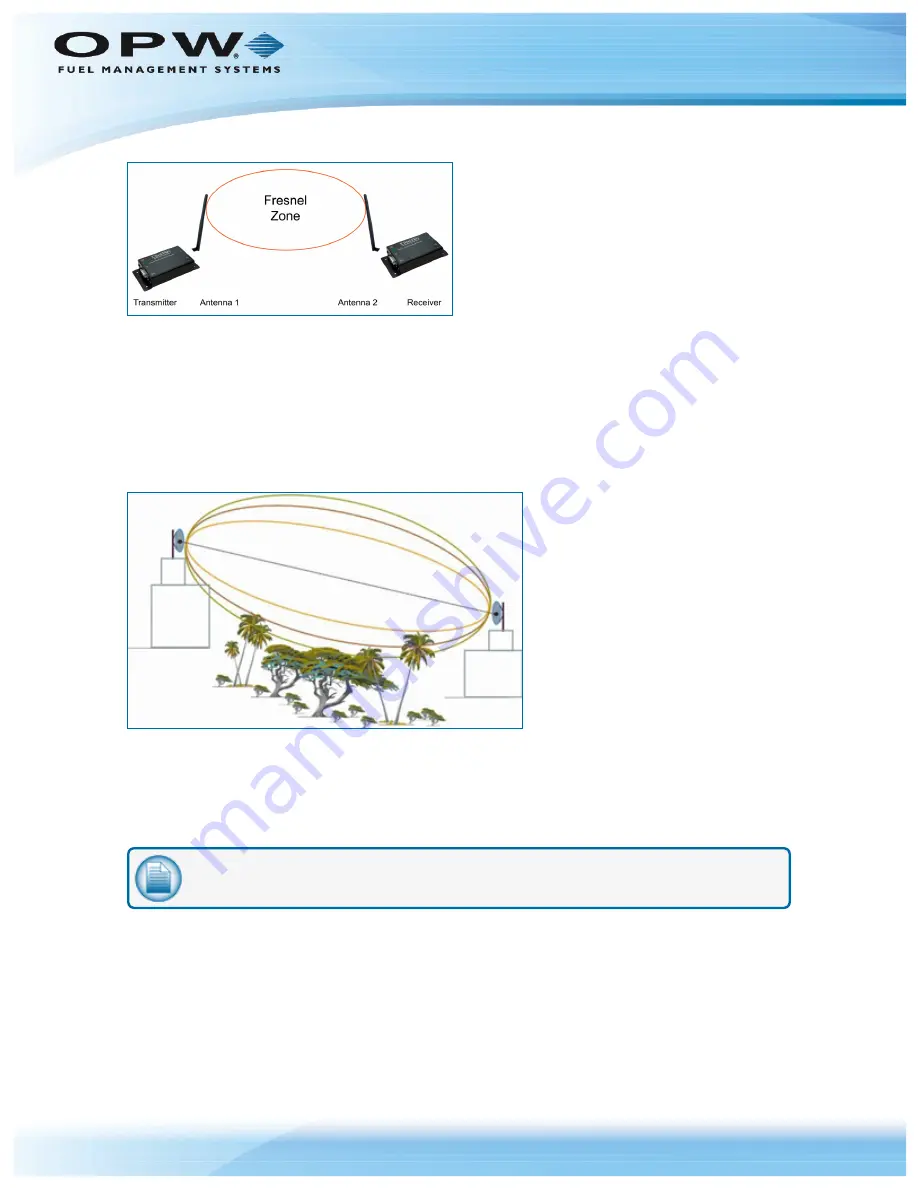
Figure 2-1 Fresnel Zone
In order to achieve the greatest range, the Fresnel Zone must be free of obstructions. Buildings, trees or any
other obstacles in the path will decrease the communication range. If the antennas are mounted just barely
off the ground, more than half of the Fresnel Zone ends up being obstructed by the Earth, resulting in
significant reduction in range. To avoid this problem, the antennas should be mounted high enough off of the
ground so that the Earth does not interfere with the central diameter of the Fresnel Zone.
It is also important to understand that the environment may change over time due to growing vegetation,
building construction, etc. If obstacles exist between two points, the antennas can be raised on one end or on
both ends to clear the Fresnel Zone of obstructions.
Figure 2-2 Antenna Height Over Physical Obstructions
How far above the ground and other obstacles the antennas need to be is determined by the diameter of the
Fresnel Zone. The diameter of the Fresnel Zone depends upon the frequency and distances between the
two radios. Various data points were inserted into Fresnel Zone formulas to provide some points of
reference. The following table provides approximate Fresnel Zone diameters at 1,000 ft (304.8 m) and 1-mile
(1.6 km) ranges.
NOTE:
OPW does not recommend a distance greater than 5,000 feet (1524 m).
Doc. No.: M00-20-7074 Rev.: 6
Page 9 of 43
Summary of Contents for M00-20-7074
Page 43: ......










































